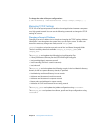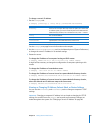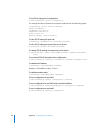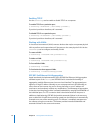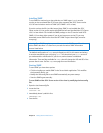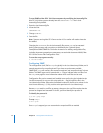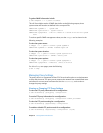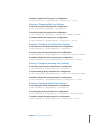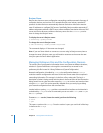
Chapter 6 Setting Network Preferences 73
Installing SNMP
To use SNMP for monitoring or data collection, an SNMP agent (snmpd) must be
running on the monitored Mac OS X Server host computer. Mac OS X Server version
10.1.5 or later includes a version of SNMP (UCD-SNMP v. 4.2.3 or later).
If you do not have the file /usr/sbin/snmpd, then SNMP is not installed. Mac OS X
Server version 10.1.4 or earlier require that SNMP be built and installed. Mac OS X Server
v10.1.5 or later Admin CDs include the SNMP package on the CD used to install UCD-
SNMP 4.2.3 on these older systems. If you do not have access to the CD, you may
download current SNMP source from the NET-SNMP Project Home Page (www.net-
snmp.org/).
The default configuration of snmpd uses privileged port 161. For this reason and others,
it must be executed by root or by using setuid. You should only use setuid as root if
you understand the ramifications. If you do not, seek assistance or additional
information. There are flags available for snmpd that will change the UID and GID of the
process after it starts. See the snmpd man page for more information.
Starting SNMP
To start SNMP you have three options:
 Click the checkbox to enable SNMP in the Server Admin application. This modifies
the hostconfig file for you.
 Modify the hostconfig file to start SNMP automatically at system startup.
 Start the SNMP agent manually.
To start SNMP on Mac OS X Server version 10.4 or later by modifying the hostconfig
file:
1 Open the /etc/hostconfig file.
2 Locate the line:
SPOTLIGHT=-YES-
3 Immediately above it, add this line:
SNMPSERVER=-YES-
4 Save the file.
Warning: Once SNMP is active, anyone with a route to the SNMP host will be able to
collect SNMP data from it. To learn more, consult the various SNMP information
sources listed below.




